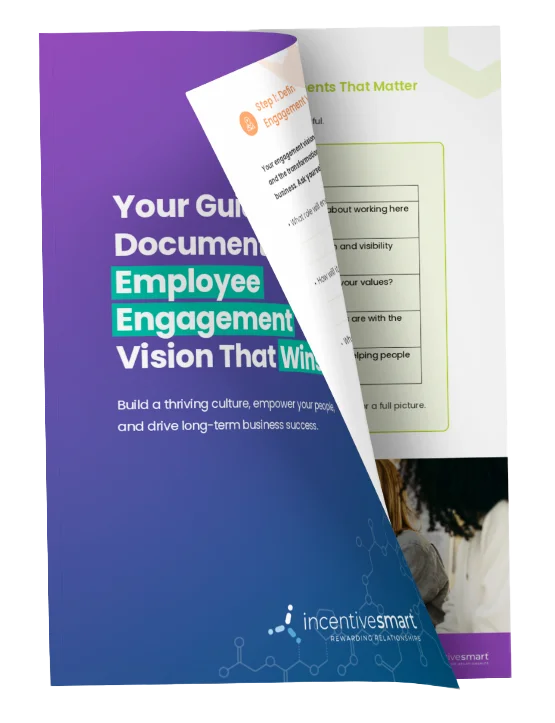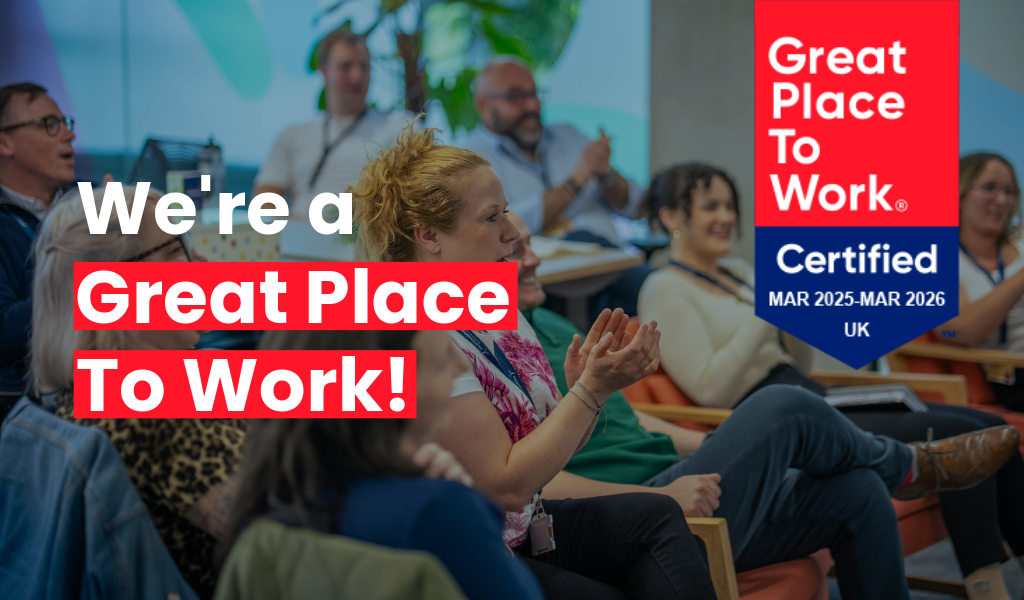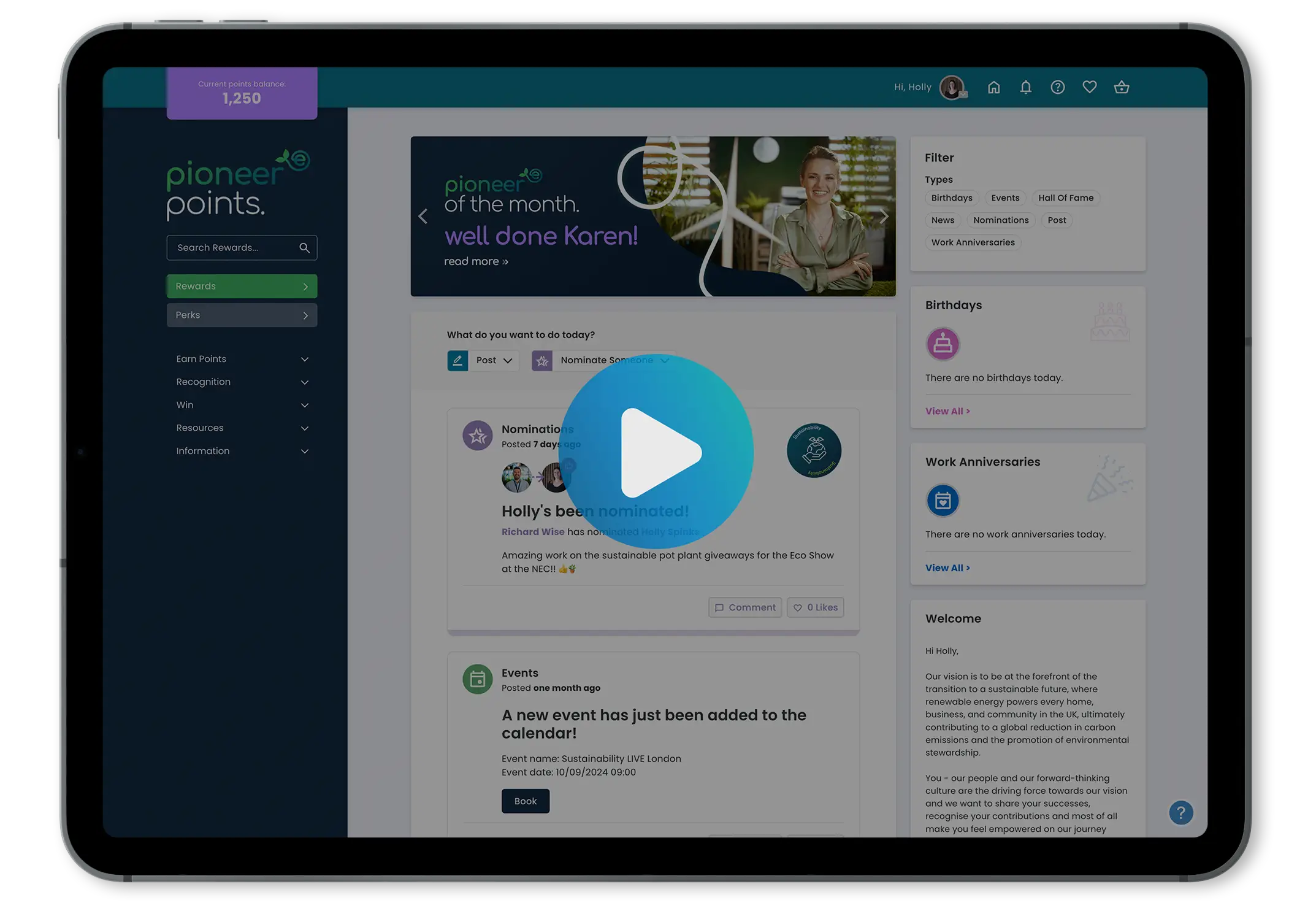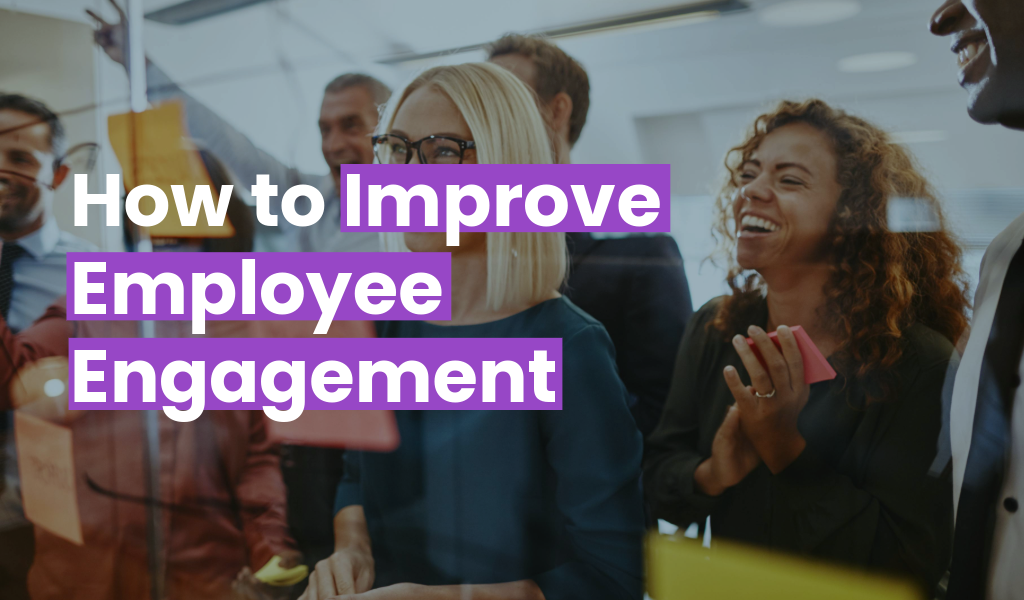


(According to Behavioural Science, Not Guesswork!)
If you’re an HR pro, a company director or a team leader who wants to know how to increase employee engagement in a lasting manner, then you need to look inside the human brain to understand the forces that drive your people’s behaviours.
Because employee engagement isn’t a vibe. It’s biochemistry.
Skip to:
Staff engagement is driven by chemical reactions
We talk a lot about “creating a culture of belonging” and “fostering motivation from within”, which are lovely words, but ultimately meaningless unless you understand what’s happening inside your employees’ heads.
When people are engaged, it’s because their brains are lighting up with four key chemicals. These are the source of natural highs that boost motivation, loyalty, satisfaction and drive our innate desire to bring our best self to work.
And with Gallup reporting that only 21% of employees worldwide are truly engaged, it’s clear most workplaces have a chemistry problem that’s causing a cultural breakdown.
You’ll no doubt recognise the names of the four chemicals in question…
 Dopamine: The Reward Chemical
Dopamine: The Reward Chemical
Dopamine fuels anticipation, motivation and pleasure. It’s what gets you hooked on checking off goals or hearing “nice work on that project.”
It’s also why your people glaze over when they spend months grinding away with zero recognition. No dopamine, no drive.
To generate more of it, you should make progress visible, celebrate small wins and give real-time feedback, rather than wait for annual appraisals (we all crave a ‘hit’ today).
 Serotonin: The Status Chemical
Serotonin: The Status Chemical
Serotonin floods the brain when we feel respected, appreciated and that our work actually matters.
It’s why being left out of meetings or having ideas ignored can tank morale.
You don’t need inflated job titles to boost serotonin. You just need leaders who listen, peers who recognise and a culture where people feel seen.
 Oxytocin: The Connection Chemical
Oxytocin: The Connection Chemical
Oxytocin is what bonds us. It’s the glue of trust and teamwork.
You can’t fake it with “forced fun Fridays”, as it grows through genuine connection that arises when people feel psychologically supported and part of something bigger than their payslip.
High-oxytocin workplaces have fewer politics and lower turnover. Because people stick around where they feel they belong.
 Endorphins: The Energy Chemical
Endorphins: The Energy Chemical
These are your natural painkillers. They’re the reason we get a rush from smashing a deadline, solving a problem or surviving a tough presentation.
They make us feel strong, capable and alive.
But they disappear when people are stuck doing meaningless tasks or suffocating under micro-management. And only show up again when challenge meets reward.
What Happens When These Chemicals Are Missing?
When your workplace isn’t firing on all four cylinders, the ugly side of low brain chemistry comes into play:
- Low Dopamine: Motivation flatlines. People do the bare minimum and “quietly quit”.
- Low Serotonin: Office politics rears its ugly head, egos clash and morale declines. Respect feels optional and so resentment brews quietly in Slack threads.
- Low Oxytocin: Teams turn transactional as trust evaporates and collaboration dies. It seems that everyone’s just protecting their turf.
- Low Endorphins: Everything feels harder than it should. Even small setbacks sting disproportionately and burnout spreads like wildfire.
So when you ask “how can we improve engagement at work”, what you’re really asking is:
“How do I engineer more dopamine, serotonin, oxytocin and endorphins in the workplace?”
That’s the real formula for engagement. But most companies get it wrong by chasing “culture” with slogans instead of stimulus. They talk about motivation yet starve the brain of the hits it needs. This neurochemical cocktail is triggered by how people are treated every single day.
So, if you want your people genuinely switched on (not just turning up) start with the simplest, most powerful trigger of all…

Recognition
Nothing boosts dopamine faster than knowing your work actually matters.
Every time someone feels noticed, their brain says: “That felt good. Do it again.”
That’s positive reinforcement in action – the same psychological principle that makes habits stick.
The science is clear: frequent recognition rewires behaviour. People chase that reward loop, consciously or not. They repeat the effort, the focus and the collaboration behaviours that earned the praise.
Where a bonus triggers one dopamine spike, then it’s gone. Recognition triggers dozens every week, on every project, with every “you smashed it” moment.
So if your bonus scheme isn’t moving the needle, it’s not that your people don’t care about money, it’s that their brains crave consistency, not one-off cash.
And when you build a culture where appreciation is part of the daily rhythm (through peer-to-peer shoutouts, manager kudos, public celebration of progress etc), you create a steady drip of dopamine that keeps motivation alive.
Why Positive Feedback Feeds Motivation
Dopamine is the brain’s motivation messenger. It rewards achievement, yes, but more importantly, it creates anticipation.
That’s why:
- When recognition is regular and authentic → dopamine flows → motivation stays high.
- When recognition is random or absent → dopamine dries up → effort feels pointless.
The brain literally learns to associate effort with reward.
So every time someone’s contribution gets noticed, it reinforces the loop:
Effort → Reward → Motivation → More Effort.
Miss that step, and motivation breaks.
Which is why teams with strong recognition cultures see 31% lower turnover and 12x higher engagement.

Connection is a biological need
People don’t generally quit because of pay, perks or the office décor.
They quit because they don’t feel connected.
And again, that boils down to biochemistry.
The glue that holds great teams together is of course oxytocin (the connection chemical).
It’s released when we feel trusted, supported and part of something bigger than ourselves. It’s what bonds parents to children, partners to each other and yes…people to their workplaces.
When oxytocin’s flowing, people collaborate effortlessly. They take healthy risks, share ideas and actually like coming to work. But when it’s missing, you get silos, politics, passive-aggressive emails and a slow exodus of talent.
So if you want to build employee engagement that lasts, focus on building belonging through initiatives such as:
- Buddy systems for new starters — so they connect, not just “onboard.”
- Cross-team projects that break silos and spark creativity.
- Team-wide recognition — because shared success releases more oxytocin than solo wins.
- Create an open, two-way comms channel – to break down the barriers between management and on-the-ground teams.
The neuroscience is simple: trust equals connection and connection equals retention.
That’s why people don’t leave jobs. They leave teams without trust.
Why Connection Is a Performance-Enhancing Wonder Drug
Oxytocin is often nicknamed the “cuddle chemical”, but don’t be fooled as it’s a powerful performance enhancer.
When it floods your workplace:
- Stress levels drop. Cortisol decreases, focus increases.
- Teamwork improves. People become more generous, empathetic and open to feedback.
- Innovation grows. The brain feels safe enough to take creative risks.
But when oxytocin is missing, everything slows down. Collaboration, communication and creativity suffer.
The antidote?
Create daily moments of genuine connection — recognition, vulnerability, laughter and shared goals.
Growth Is the New Currency
The other primary reason people leave is when they stop growing. And that’s because they crave progress.
Every time someone masters a new skill, solves a tough problem or smashes a target they once found impossible, dopamine (reward) and endorphins (energy) fire up.
In fact, companies that invest in development have 34% higher retention and 15% higher employee engagement.
Humans are hardwired for mastery, so we crave challenge and the rush that comes from gaining competence. When work becomes stagnant, our brain flatlines and “quiet quitting” sneaks in through the cracks.
To keep the the energy flowing:
- Give people stretch goals that scare them a little, not bore them a lot.
- Make learning visible — celebrate progress, not just outcomes.
- Create career paths that feel real, not theoretical.
- Let people own projects, experiment and sometimes fail (as failure still releases endorphins when it leads to growth.)
When employees feel themselves evolving, they get hooked on the process. They become happier, sharper, hungrier, even without you needing to double their salary or invent a new job title.
Why Challenge Feeds Engagement
Endorphins are the brain’s natural painkillers and paradoxically, they thrive on discomfort. They’re released when we push through something tough and come out stronger on the other side.
That’s why teams who face meaningful challenges together (such as a tight deadline, a creative sprint or a product launch) end up more bonded and motivated than those drifting through “business as usual.”
It’s a balancing act:
- Too much stress = cortisol overload → burnout.
- Too little challenge = no endorphin release → boredom.
The sweet spot sits right in between, where work feels demanding but doable. That’s where growth happens and engagement lives.

Purpose Builds Passion
The most underrated performance enhancer in business could well be meaning.
Serotonin (the chemical of significance) spikes when people feel proud of what they do and connected to something bigger than themselves. It’s the biological proof that humans don’t just work for money, we work for meaning.
So if your company’s “purpose” is buried on page twelve of a PDF no one’s read since induction week, dust it off and make it breathe life into it. Because people don’t rally behind logos. They rally behind impact.
Purpose gives work context. It turns tasks into contributions and KPIs into causes.
So when you tie someone’s daily actions to a bigger mission – whether it’s changing customer lives, reducing waste, or simply doing good business responsibly – serotonin kicks in. Then pride, loyalty and fulfillment follow.
It’s contagious. When leaders talk purpose with conviction, teams mirror it. When employees feel their work matters, customers feel it too. That’s serotonin rippling through your whole ecosystem.
Why Meaning Beats Money
When Serotonin levels are high, people feel valued, confident and emotionally balanced. But when they’re low, insecurity creeps in, along with cynicism and apathy.
Behavioural science shows:
- Money motivates temporarily. Serotonin sustains motivation long-term.
- Where recognition boosts dopamine, purpose elevates serotonin — a deeper, steadier form of satisfaction.
- High-serotonin teams show more resilience, empathy and cohesion — because they believe what they do actually matters.
All organisations with a clear, authentic mission outperform those built on perks and platitudes. So, to improve employee satisfaction and build engagement that lasts, stop selling jobs. Instead, start selling significance
Improving Employee Engagement will give you a competitive edge
Employee engagement is the secret sauce your competitors can’t steal.
- Engaged employees are 21% more productive.
- They’re 59% less likely to quit.
- And they make customers significantly happier (because happy people don’t treat customers like interruptions).
Engagement hits the bottom line harder than any marketing campaign you’ll run this year.
Disengagement, on the other hand, is expensive. It costs the global economy over $438 billion in lost productivity every year. That’s roughly a third of an employee’s salary squandered!
Engagement isn’t complicated, but it does take deliberate effort to foster recognition, build trust, create purpose and encourage growth, every day.
So be sure to follow the science and build a culture that’s literally wired for brilliance.
Do it right and your workplace will become magnetic. Talent will stay, innovation flows and performance spikes.
Turn the science into a step-by-step plan
Ready to put all this into practice?
Download our Employee Engagement Playbook and you’ll receive:
- A proven recognition framework to trigger daily dopamine hits
- Team-bonding rituals that build real trust (not forced fun)
- Growth roadmaps and checklists you can run this quarter
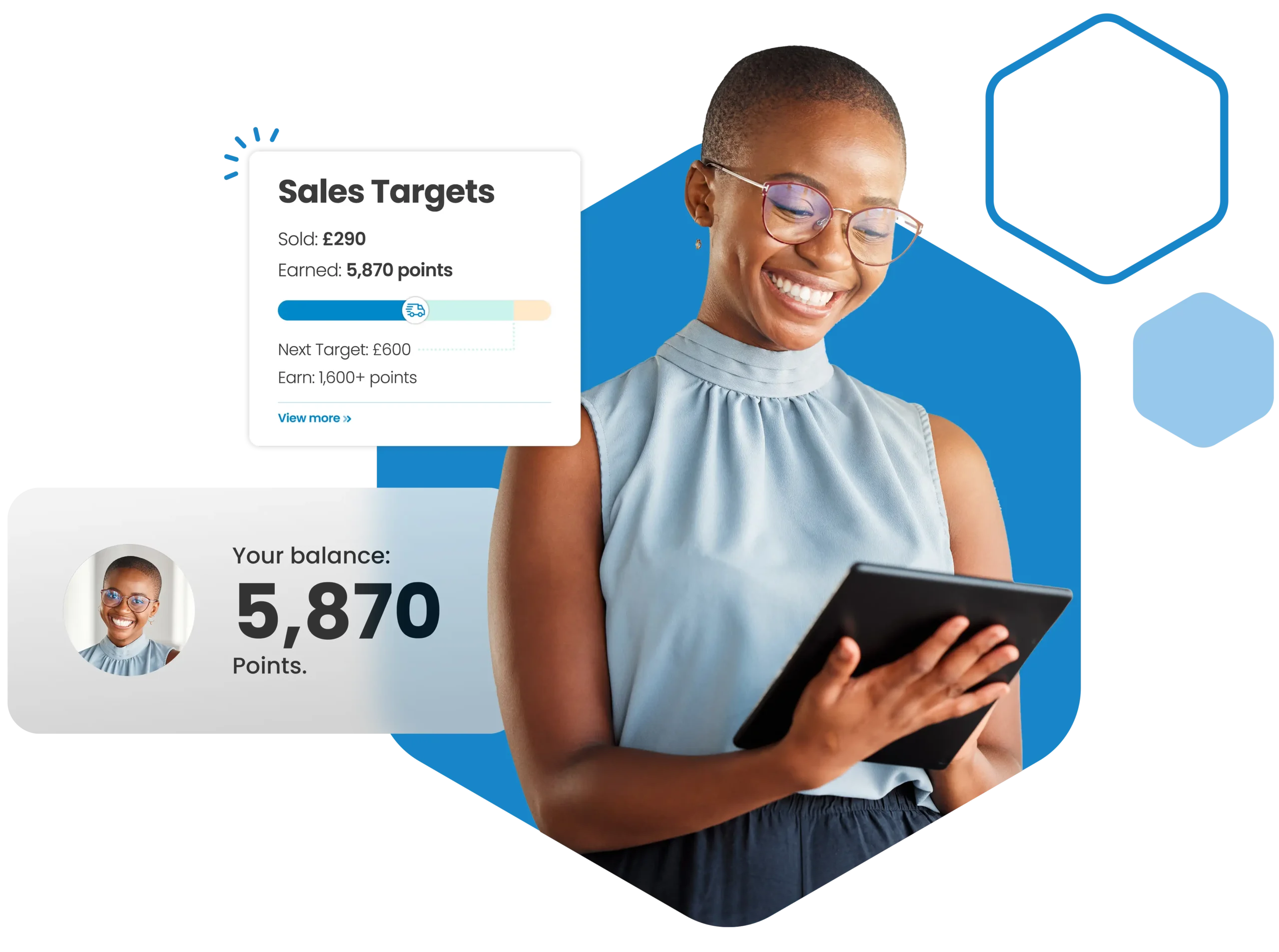

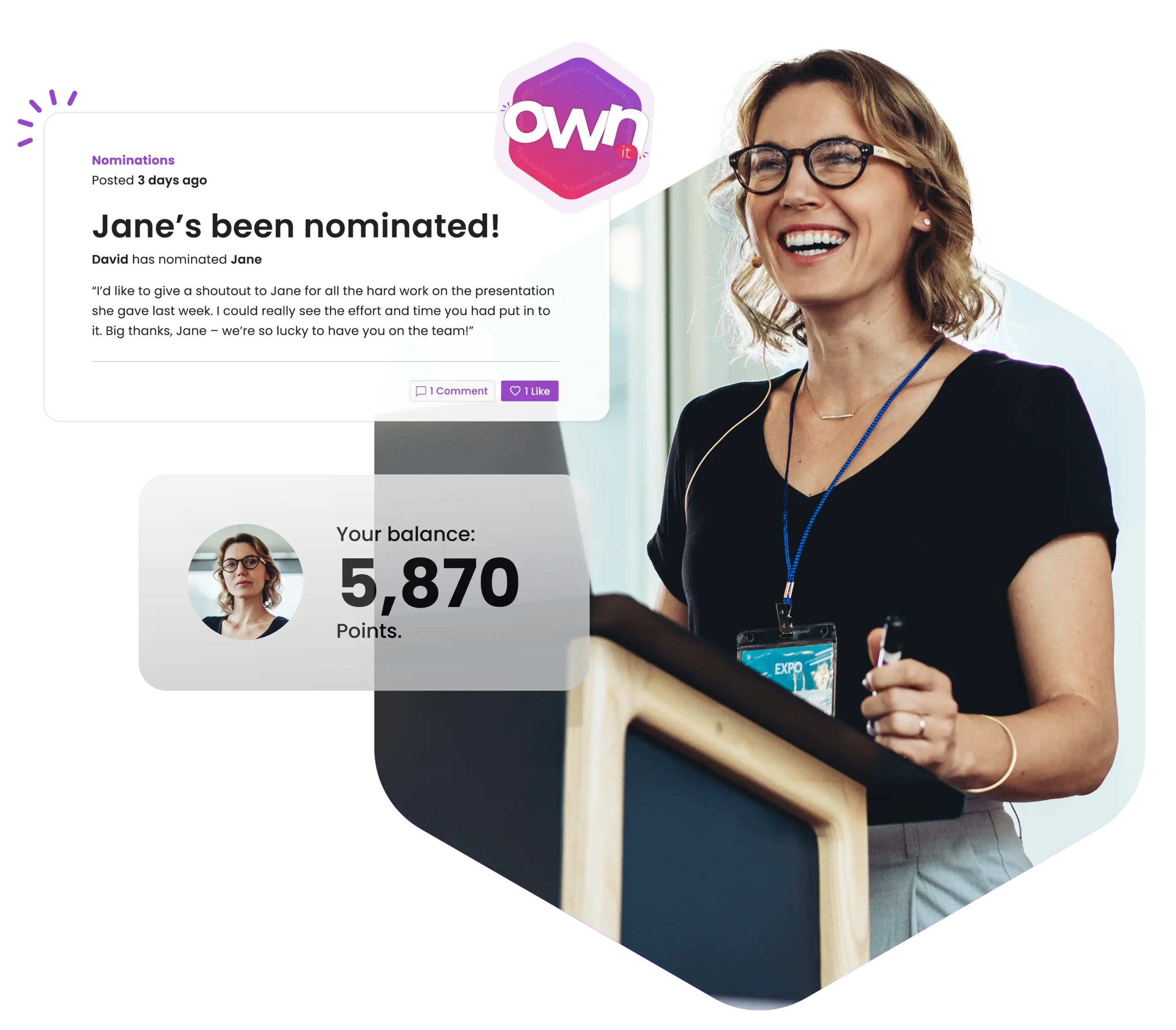
![*FREE GUIDE* How to implement a fantastic company culture in 6 steps Enter your business email for instant access. {{ include_custom_fonts({"Poppins":["Semi Bold"]}) }}](https://no-cache.hubspot.com/cta/default/5921162/interactive-188034983837.png)
